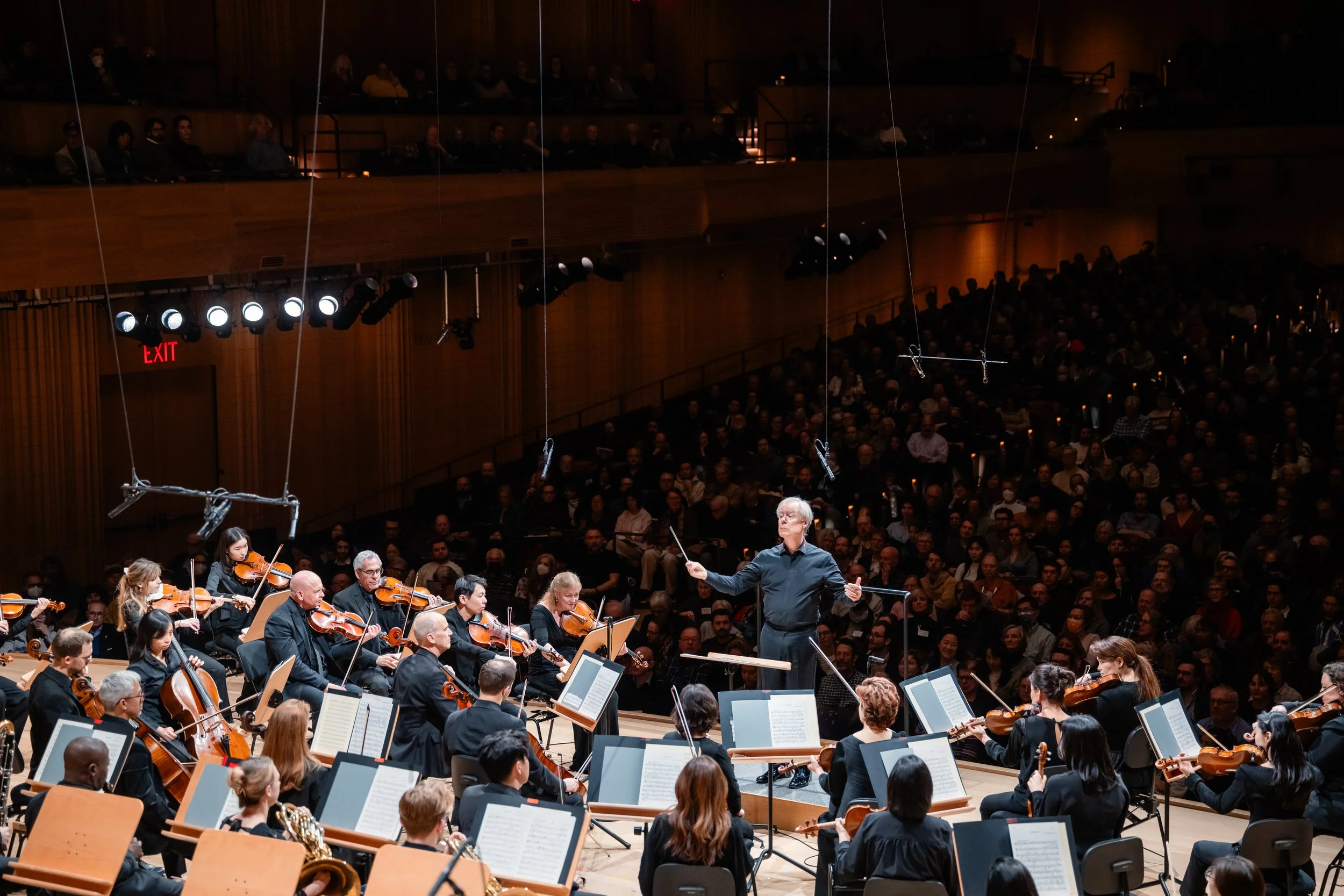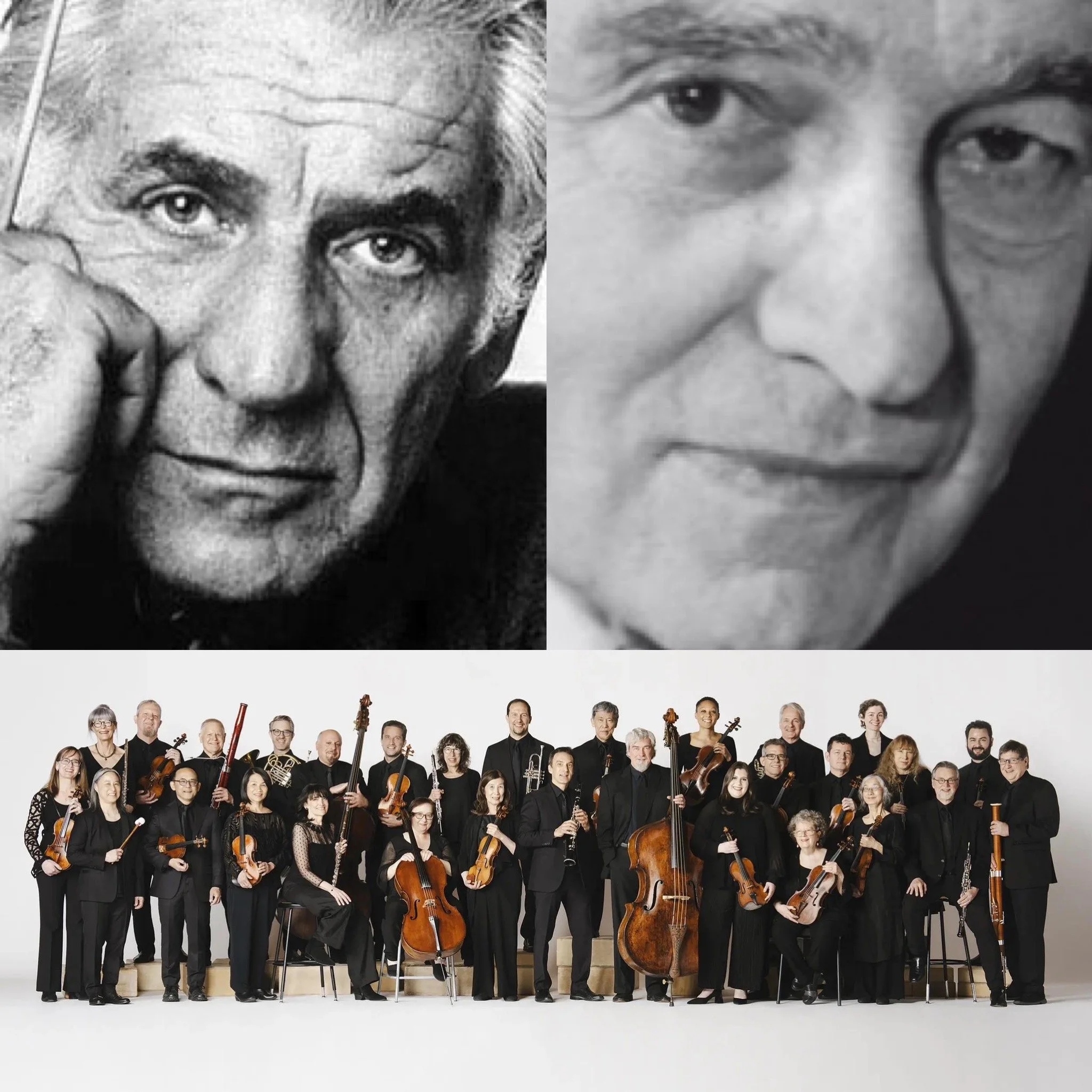REVIEW: ‘Rug Concert,’ Revived, in NY Phil Tribute to Boulez
Above photo by Brandon Patoc.
January 25, 2025
“Nothing has been more heartening in the local music scene, perhaps, than the reception given the New York Philharmonic's Rug Concerts. Friday night's concert, which was exceptional in many ways, provided further proof that there is an audience among the young, for live symphonic concerts concerts that, moreover, include a large dose of difficult 20th‐century music,” wrote Raymond Erikson in his New York Times review of the New York Philharmonic’s concert on June 14, 1974.
The previous season, the Philharmonic’s then-Music Director Pierre Boulez — iconoclast figure in twentieth-century music — had instituted the “Rug Concerts,” an experiment fostering a casual, inviting atmosphere by removing the auditorium’s seats, replacing them with rugs and pillows. On the occasion of Boulez’s 100th birthday, the Philharmonic honored the memory of this pivotal conductor — who led the orchestra ‘71 to ‘77, in between Leonard Bernstein and Zubin Mehta — by recreating (musically, anyways) one of these unusual evenings in symphonic history.
The Rug Concerts featured another angle, as well. Moving the orchestra downstage, toward the audience, and inviting some to sit behind the musicians, Boulez not only presciently asserted to bring the art to newer, younger listeners, he also sought an inventive adaptation to the hall’s notoriously unsatisfactory acoustics. This Sound On: A Tribute to Boulez matinee was enjoyed in a newly renovated David Geffen Hall — one that had moved the playing area downstage, toward the audience, and placed rows of seating behind the musicians.
The concert at hand (audience, alas, in normal seats) began with a small consort of Philharmonic principals breezing through a sprightly J. S. Bach Brandenburg Concerto No. 3 in G Major, BWV 1048. Following that, conductor David Robertson, exuding joy at the unusual breadth of the afternoon’s juxtapositions, led an energetic, colorful reading of Franz Schubert’s Symphony No. 2 in B-flat Major, D. 125.
Photo by Brandon Pato
The concert’s second half was devoted entirely to twentieth-century music: portions of Boulez’s own 1957 song cycle Pli selon pli were preceded by Anton Webern’s Symphony, Op. 21, and followed by Igor Stravinsky’s L’Histoire du Soldat Concert Suite. The number of players varied; the Stravinsky is a mere septet, and the Boulez piece features just vocalist, harp, keyboards, and percussion. Boulez’s embrace of variety — from Bach to himself, from Baroque court to mid-century modern, of both period and color palette — is instructive.
Webern’s Symphony would have benefitted from more rehearsal. Transparent, yet obscure, merely playing the right notes at the right time (which seemed the primary hurdle in this well-conducted, but fly-by-night reading) was not quite enough to bring the art into view.
Photo by Brandon Patoc
But the Boulez work, Fold by Fold: Improvisations on Mallarmé (first, “Le vierge, le vivace et le bel aujourd’hui” and second, “Une dentelle s’abolit”) did not suffer the same fate — soprano Jana McIntyre achieved the near-impossible, delivering an engaging, sentient (and memorized) performance of some of the thorniest art-song ever conceived. The Philharmonic’s percussion section, sporting such novelties as Chinese gongs, crotales, and vibes, created a hypnotic suspension of tension and release, while McIntyre made Boulez’s athletic setting of the French impressionist poetry appear natural and graceful.
Finally, Robertson led a gritty, driving traversal through Stravinsky’s earthy L’Histoire du Soldat Concert Suite from 1918. Sheryl Staples dazzled in a lead role on violin, and Anthony McGill made easy work of the high clarinet’s treacherous arpeggiations. Timothy Cobb, on bass, provided a propulsive motor, and the Faustian moral (“money does not buy happiness,” perhaps) was delivered in the “Grand Chorale” with a lack of sentimentality that might have pleased Pierre Boulez.
Photo by Brandon Patoc








